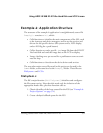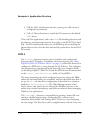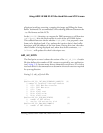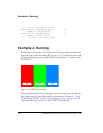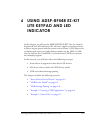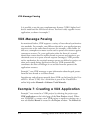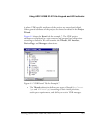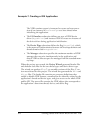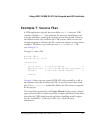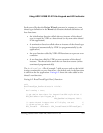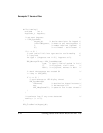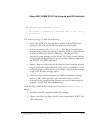
VDK Message Passing
6-4 Getting Started with ADSP-BF548 EZ-KIT Lite
It is possible to use the two complementary features (VDK’s higher-level
device model and the SSL/device drivers’ low-level code) together in one
application, as shown in example 7.
VDK Message Passing
As mentioned before, VDK supports a variety of inter-thread synchroniza-
tion methods. For example, two different threads in your application may
require access to the same shared resource; for example, a data buffer. In
this case, a semaphore or mutex can be used to protect the resource against
concurrent accesses. Or, your application takes the form of a control
thread that creates data for worker threads to process and requires a syn-
chronized access to a queue of work requests (messages). VDK provides
such a mechanism: the required message queues are defined at project cre-
ation and created during application start-up. VDK automatically
coordinates the flow of messages in to and out from the queue as the
application executes.
Example 7 uses VDK messages to pass information about keypad presses
from the boot thread to a worker thread.
Introductory and reference material about VDK can be found in the Visu-
alDSP++ Kernel (VDK) User’s Guide that is part of the VisualDSP++
online help under Manuals–>Software Tools Manuals.
Example 7: Creating a VDK Application
Example 7 was created as a VDK project by selecting the project type
VDK application on the initial page of the New Project wizard. When-
ever VisualDSP++ creates a new VDK project or opens an existing one, a
new tab labelled Kernel is created in the Project window. The Kernel tab




